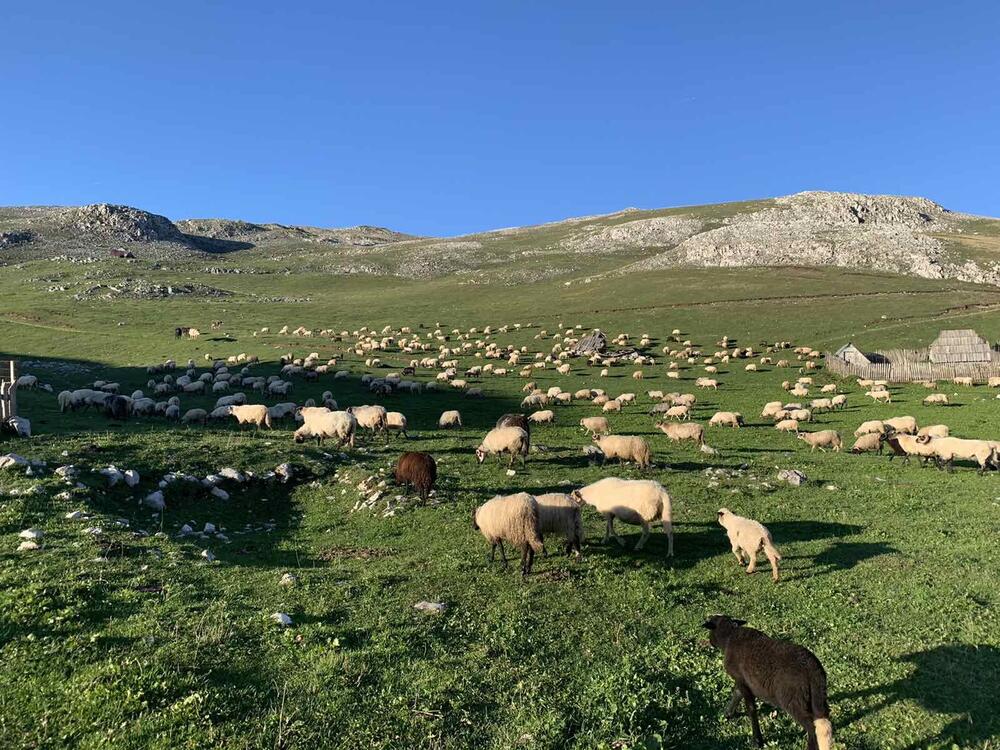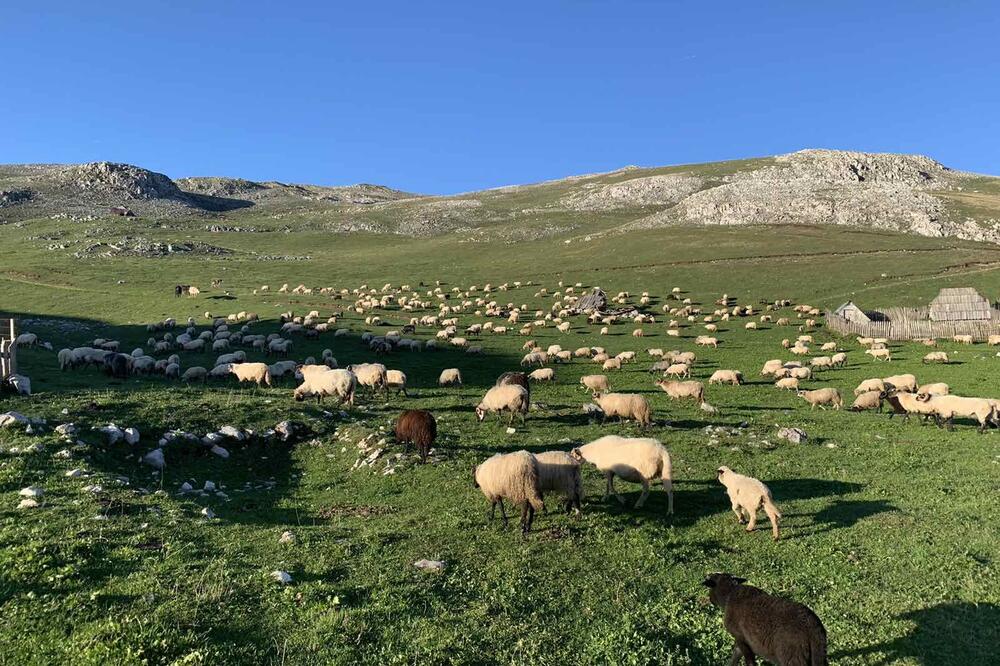There are white herds of sheep on the mountain, among them shepherds who keep a watchful eye on them and dogs who run through the bushes.
A few meters away are herds of cattle and playful horses. This is the sight that awaits you when you set foot on the pastures of Mount Sinjajevina.
At the end of September, ten mountain women and herdsmen await in the Bjelopavlići katun, over which the Ružica church watches over. Smoke hangs above the huts, a fire crackles in the huts, breaking the mountain cold.
Darkness is slowly falling on the katunas, the shepherds close the sheep in the pens, so as not to protect them from the wolves. This summer too, the wolves slaughtered a few of their sheep or calves. A bear used to come down near the huts, and wild boars repeatedly "plowed" the mountain crops.
Hard-working housekeepers and mountain women milk sheep and cows in order to collect as much white milk as possible.
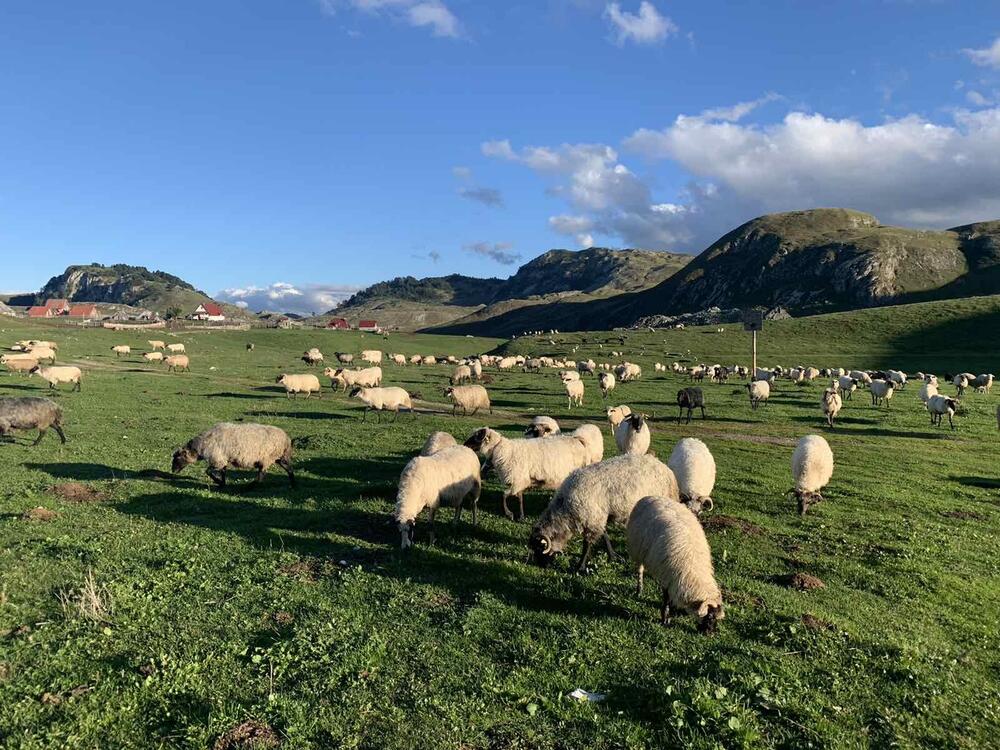
The daily duties, which are big and difficult, end only when it gets dark, and at night, when the temperature starts to drop, the sound of the fiddle breaks through the katun, accompanied by the booming voice of Vanja Vuletić.
"Sinjaj'vino, you are the only one, you are the most beautiful of the mountains," Okrugljak bursts out.
Vanja sings, and a couple of men repeat after him. The singing by the fire begins.
His herd of sheep is still on Sinjajevina, the mountain he has been climbing for decades.
He says that he will have to move them to lower pastures before the snow. The first station they will reach over the mountains is Lola. There the sheep will graze until the snowflakes cover the green grass, and then they will return to Bjelopavlić along the old roads, where his ancestors used to go up and down from the mountain. Yes last name.

The following year, the same path and the same circle. The nomadic life of those who decide to make a living from this work is arduous.
Cruel life on the mountain
On Sinjajevina, a harsh, mostly waterless mountain located in the central part of Montenegro, life and everyday life are made easier by several inexhaustible springs. One of them is the spring of Ružica, with the water of which the hardworking mountain women keep their cups and the shelves on which they are arranged impeccably clean. The huts are lit by kerosene lamps or lanterns. Only in some cases does the lighting come from light bulbs connected to aggregates. However, they do not give up their life in the katuns.
The taste of the rind and cheese they collect is completely different from that when the sheep and cows graze in the lower regions, where the nature is not the same, nor is it as clean.
One of the shepherds says that his best days are on the mountain. He lets the sheep go, and he walks after them in the woods, far from the gloomy everyday life. The peace of the people who spend several months on that mountain does not disturb anything, they do not receive bad news, because the signal coverage is weak. They say that it doesn't bother them either, on the contrary.
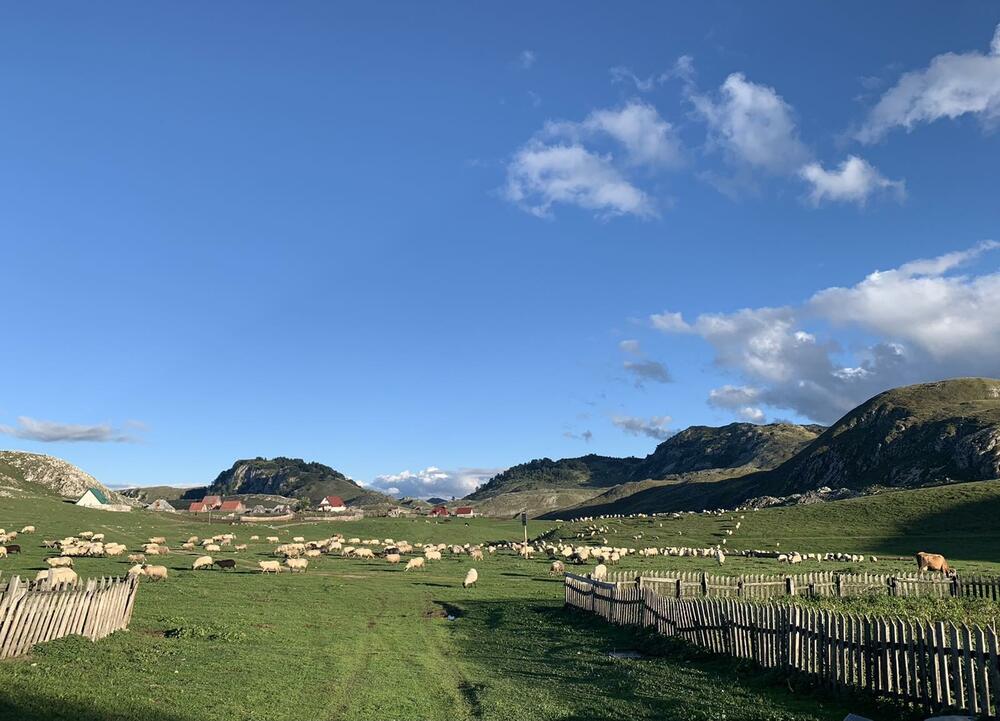
That they are persistent in their intention to stick to tradition is also shown by the fact that even in the last days of summer, at the very beginning of autumn, they are on that mountain with several thousand head of cattle. Mostly small ones. Individual households have from about 700 to slightly more than 1.000 sheep. Among them are younger people, who show by example that you can make a living from your work.
But it's not just Bjelopavlić katun full of life. Chaktars are also heard in Mojkovac and Bjelopolje katun. Sheep also graze on Margita, a place that one of the previous governments planned to turn into a military training ground.

In addition to shepherds and mountaineers, you will often meet herb collectors in that area.
The largest pasture in the Balkans
Sinjajevina is the largest pasture in the Balkans, the data is from the website of the National Tourist Organization, it is 35 to 40 km long and 10 to 15 km wide. With a pasture area of 120.000 hectares, on which 200.000 sheep can graze, Sinjajevina is one of the first pasture-breeding mountains.
That mountain is located in the central part of Montenegro. It is bordered by the Tara and Morač rivers and the mountains - Durmitor in the northwest, Ljubisnja in the north, Bjelasica in the east-southeast, Moračke planina and Maganik in the southwest.
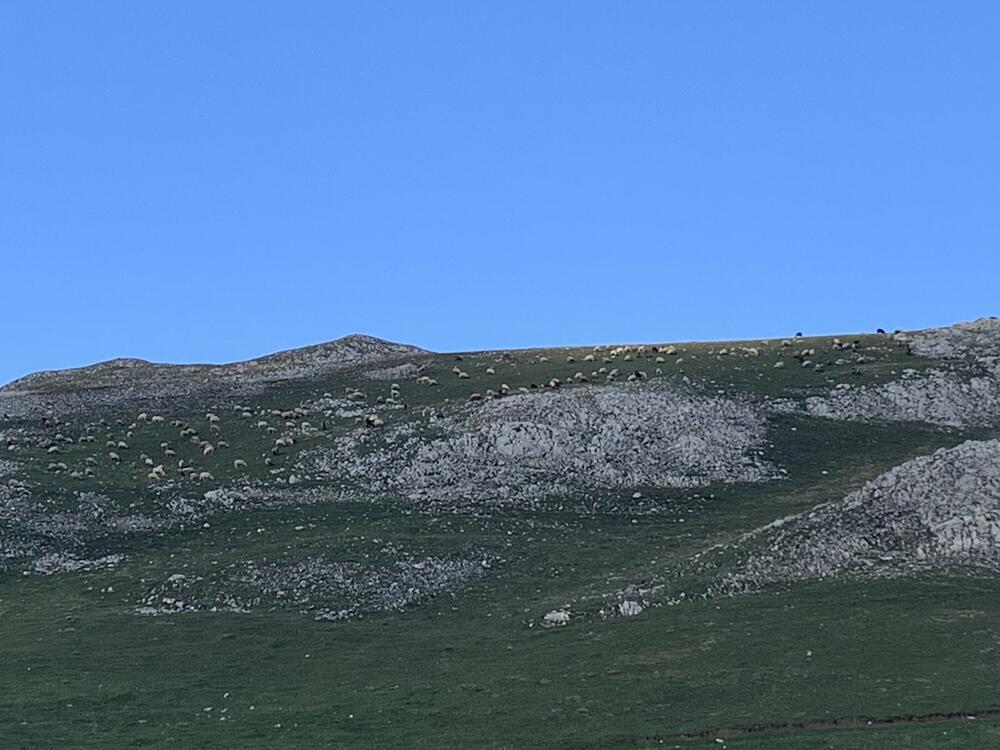
It is also decorated with several lakes. Among them, Zabojsko stands out for its beauty. It is located on the northeastern part of that mountain, where it is cradled between conifer and beech forests, at about 1.500 meters above sea level. Grkovsko jezero is a little further from it, and Sava's water glistens under Sava's beam. This beauty among the mountains is also adorned by Lake Zminičko, located on the border of Sinjajevina and Durmitor, at an altitude of 1.295 meters above sea level.
Apart from the development of animal husbandry, this mountain offers numerous opportunities. Some of them are mountain tourism, cycling, hiking, equestrian tours, which have become more and more popular in recent years.
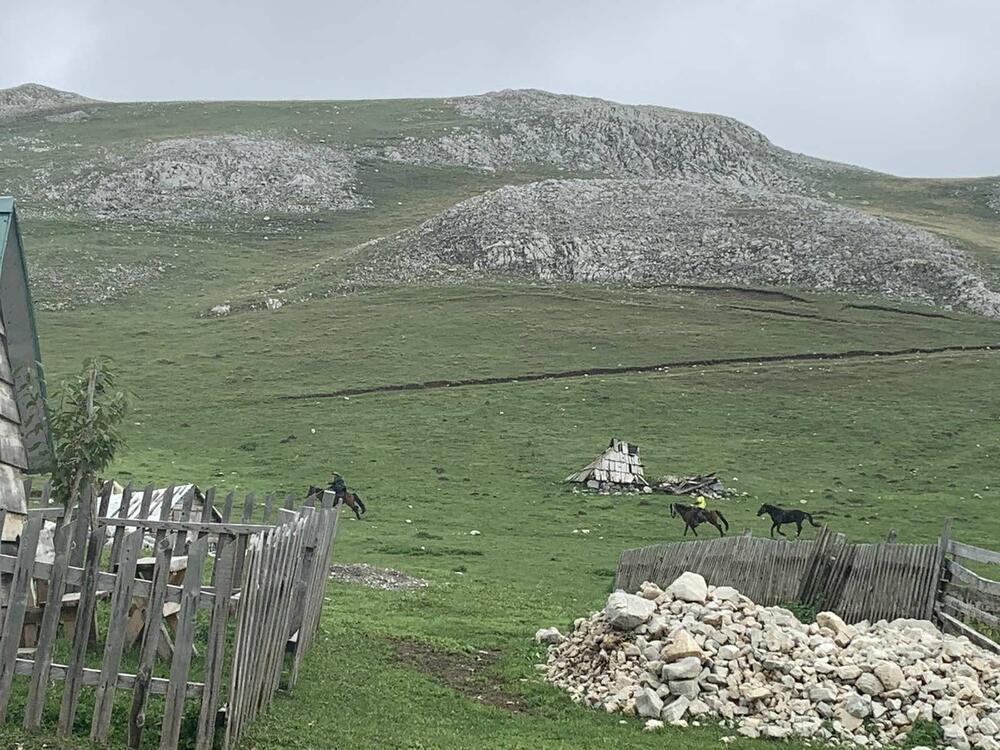
Last weekend, a dozen horsemen rode through Sinjajavina. They headed for Žabljak. People from Katun say that such guests are on the mountain almost every day.
"They ride from Kolašin to Žabljak. Although they could do it during the day, they spend the night by Lake Zaboj, enjoying the beauty of nature, and then the next day they go further," explains one of the shepherds.
Mountaineers are also often encountered, and they have somewhere to walk - the highest peaks of Sinjajevina that they reach are Babji Zub (2.277 m), Vranova glava (2.215 m), Jablanov vrh (2.203 m), Gradište (2.174 m), Sto (2.172 m) ), Sava greda (2.101 m).
Ruins in Pavković katun
In Pavković katun, which was once full of life, today there are only the ruins of a dozen stone huts. They are witnesses of former life in that hidden place, bordered by the slopes of Sinjajevina.
Stone slabs overgrown with thick grass clearly show where the doors of the huts were, where their cattle pens were.
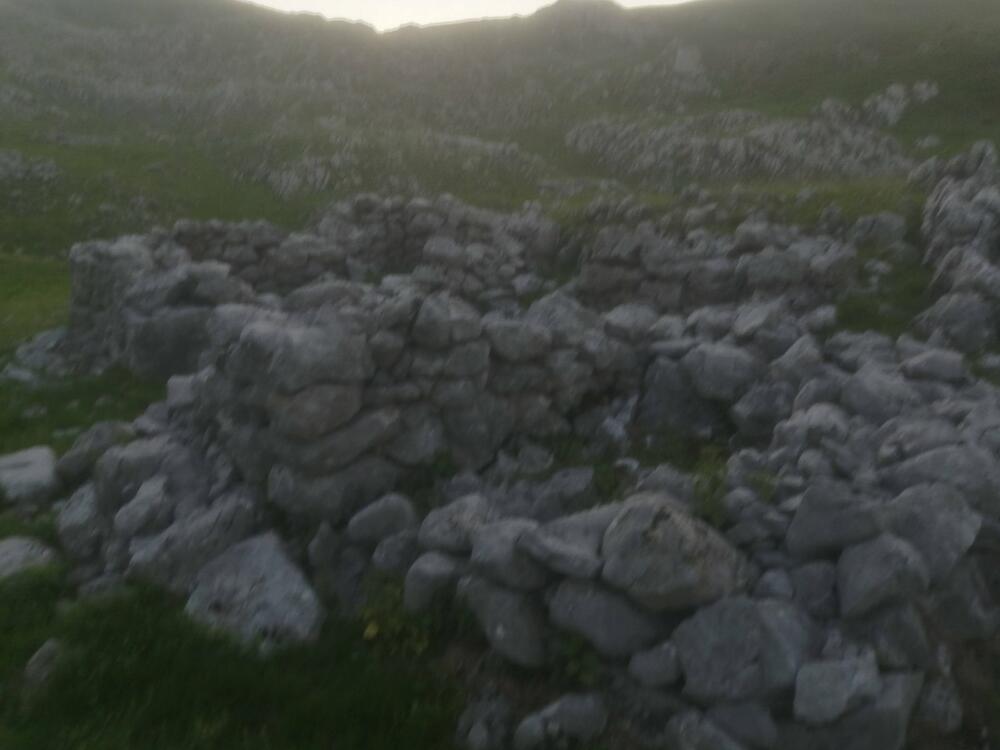
Since it was burned and destroyed during World War II, none of the huts have been rebuilt. The reason for this, say those who have been building on Sinjajavina for years, is the fact that there is no road to Pavkovići katun, so it would be difficult to carry lumber on horses.
The Pavkovići - Jovanovići, Kalezići, Đurovići, Stojanovići - built the Pavković katuns.
Bjelopavlići from Prince Nikola
In Ružica, a well-known part of Sinjajevina, the Bjelopavlić family built the church of St. Vasilij Ostroski.
There is also a sign on it with the inscription:
"This holy temple of St. Vasilij the Ostrog miracle worker was built by the Bjelopavlići in 1894 as a memorial of eternal gratitude to His Highness Prince Nikola I Petrović Njegoš, who gave the Bjelopavlići a rise to this mountain in 1881".
There are graves in the church gate. And they bear witness to the battles for that mountain.
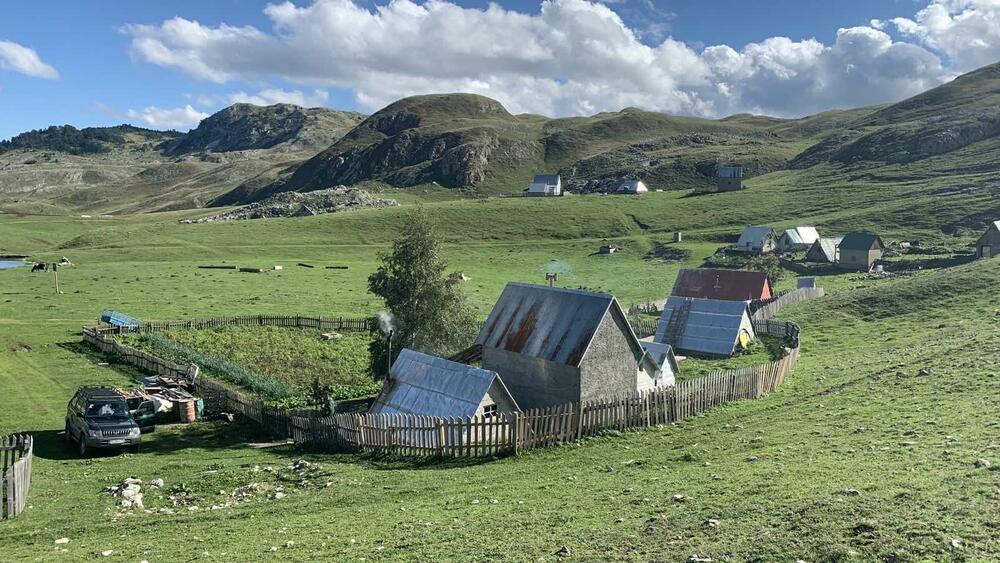
In 1881, Prince Nikola I Petrović, as a sign of recognition and gratitude for his special services, gave Rist Bošković, as a representative of Bjelopavlić, an elevation on Sinjajevina.
From then until 1893, 53 people from Bijelopavlić died defending this area from the Turks.
12 of them from Vržegrmac died in one night and they were all buried in the cemetery under Borov's head.
Above the Ogrugljak katun, on the hill overlooking the Ružica church, are the remains of the Bošković tower, which stands guard over that mountain. The tower of Brigadier Blaž Bošković and Commander Jovica Radović on Sinjajevina was the only one in ancient times that was not made of dry wood, but of clay.
Bonus video:



